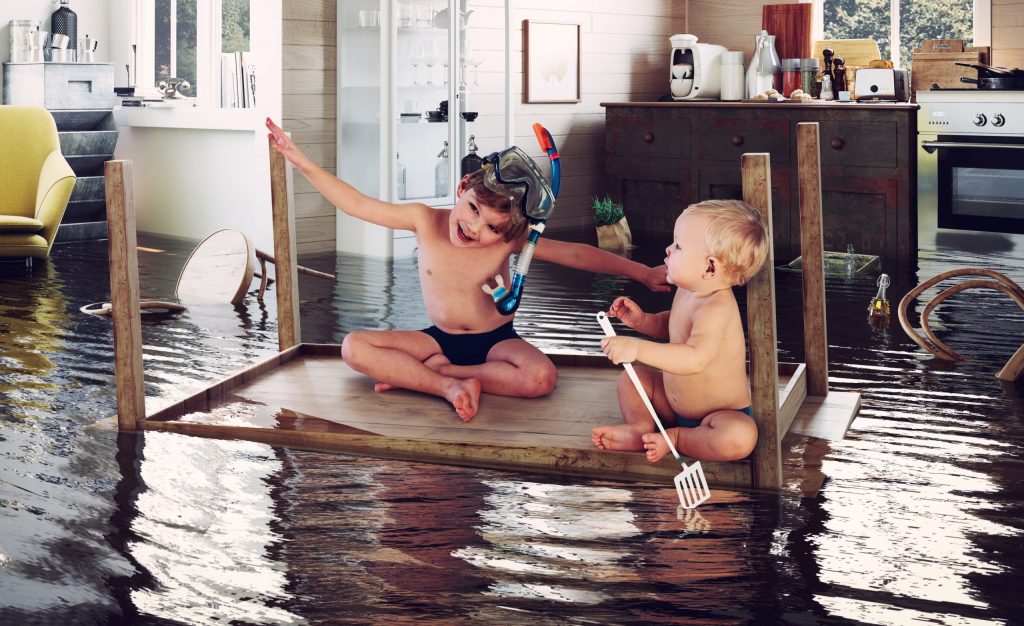The Dangerous Truth About Flooding – and Your Home

Water may seem unobtrusive. But even a single inch of water can be devastating for homeowners. According to Federal Emergency Management Agency (FEMA), floods are the number one natural disaster in the United States, costing Americans millions of dollars collectively every year in flood damage.
Floods have the power to damage not only your home and sense of security but also your financial future. To mitigate your risks from flooding, it’s important to protect your home with a comprehensive flood insurance policy. But what goes into that? What are your flood options? And why is it necessary if I live in a landlocked city?
Let’s dive in.
Why do I need flood insurance?
Everyone is suspensible to devasting flood damage – no matter where you live. It’s estimated that twenty percent of flood claims are filed by people living in moderate- or low-risk areas.
Just ask Susan Smith.
When floodwater from the storm surge after Hurricane Katrina started pouring through the walls of Susan’s Florida home, she knew she had to get out fast. By the time she and her son ran upstairs to grab the family cat, rising water trapped them on the second floor of their home.
With the help of a neighbor, they manage to escape. But when the water receded and Susan finally returned to her property, she discovered most of the contents and drywall were unsalvageable due to the severe flood damage. She thought her homeowner's insurance policy would cover the losses, but found out most standard homeowners policies do not cover flood damage.
"The water got so high, everything was just destroyed," Susan told the National Flood Insurance Program. "I didn't have flood insurance because I wasn't in a flood plain, so we were told we didn't need it."
As Susan found out the hard way, flood losses from disasters like these are specifically excluded from homeowners and personal umbrella insurance policies. While some regions like coastal areas are certainly more flood-prone than others, the unpredictability of climate change exposes all property to some risk.
And storm surge isn’t the only culprit. Flood damage is also caused by torrential rainfall, mudflows and even rapid snowmelt in spring that cause rivers to run high and surge into lower-lying areas. Even small creeks, dry streambeds, dried-up canals or low-lying ground that appears harmless in dry weather can flood.
Are you prepared for a flood?
Knowing what to do during a flood is important – because you may only have minutes to react.
If flooding is potentially expected in your area, start by moving your furniture and valuables to higher floors – or elevated areas within your home. In case of evacuation, fill your car tank up with gas.
If a flood warning is issued for your area, take the following precautions:
- Gather emergency supplies and fill bathtubs with clean water.
- Tune your radio to weather updates, disaster directions and signals.
- If you must evacuate, take only essential items with you.
- Move to higher ground, staying away from rivers, streams, creeks and storm drains.
If your home is affected by flood damage, follow the following guidelines immediately:
- Throw away food that is not safe to eat and use only bottled water until local authorities have determined that tap water is safe to cook with and drink.
- Stay away from damaged buildings and structures and do not touch fallen power lines.
- Don’t turn on your power until a qualified electrician has determined that it is safe.
- Wear protective clothing when handling hazardous materials or cleaning up mold.
The thought of a flood permanently damaging your home can be scary. Luckily, there’s a way to protect you and your family’s livelihood: flood insurance.
Finding the right protection
Flood insurance provides the protection you need to cover losses after flooding ravages your property. The cost of premiums varies based on the amount of coverage you need, what your coverage entails and your property’s flood risk.
Many people believe that federal assistance from the US government (FEMA) will suffice if they suffer flood damage. This is a dangerous gamble. Federal assistance is only available if the US president formally declares a disaster – and if that doesn’t happen, you’ll have to shoulder the massive costs alone. If you do obtain federal assistance, you’re also often required to repay it with interest – along with any mortgage loans that you still owe on the damaged property.
Only a personal flood insurance policy can provide secure protection that safeguards your most valuable asset – while providing invaluable peace of mind. And unlike federal aid, flood insurance claims never have to be repaid.
What does flood insurance cover?
For your losses to be covered under a flood insurance policy, the following definition of a flood applies: a general and temporary condition of inundation of two or more acres of normally dry land area or two or more properties (at least one of which is your property) from an overflow of inland or tidal waters.
You might be surprised to learn that not all water losses are considered flood damage. For instance, water damage from mold – that is not due to flood damage – is not covered by flood insurance, as this could have been avoided through homeowner proactivity.
It’s important to note that new flood insurance policies usually have a 30-day waiting period. You will not be insured if you buy a policy a few days before a flood. However, if your lender requires flood insurance to make, increase, extend or renew your loan, there is no waiting period.
Getting started with a flood insurance policy
As long as your community participates in the National Flood Insurance Program (NFIP), you’re eligible to purchase personal flood insurance. Acentria can assist you in determining if your community participates in the NFIP.
You don’t have to face the threat of floods alone: contact an Acentria agent today to learn more about affordable flood insurance coverage options.

.png)
